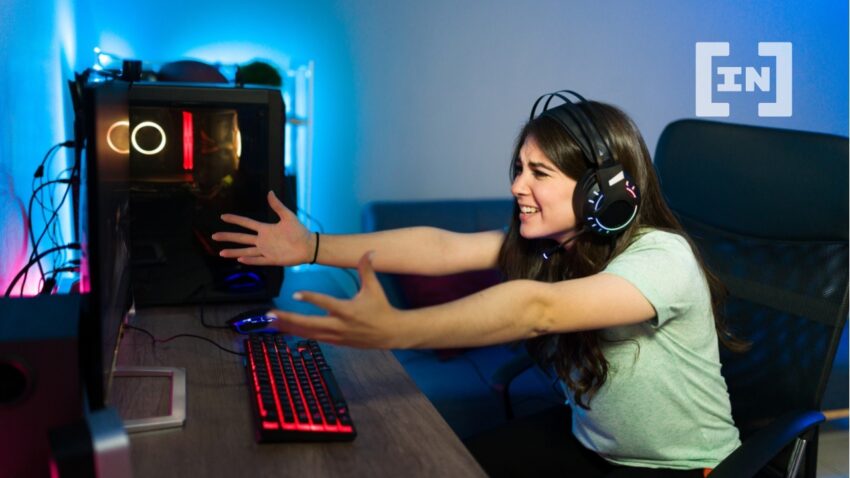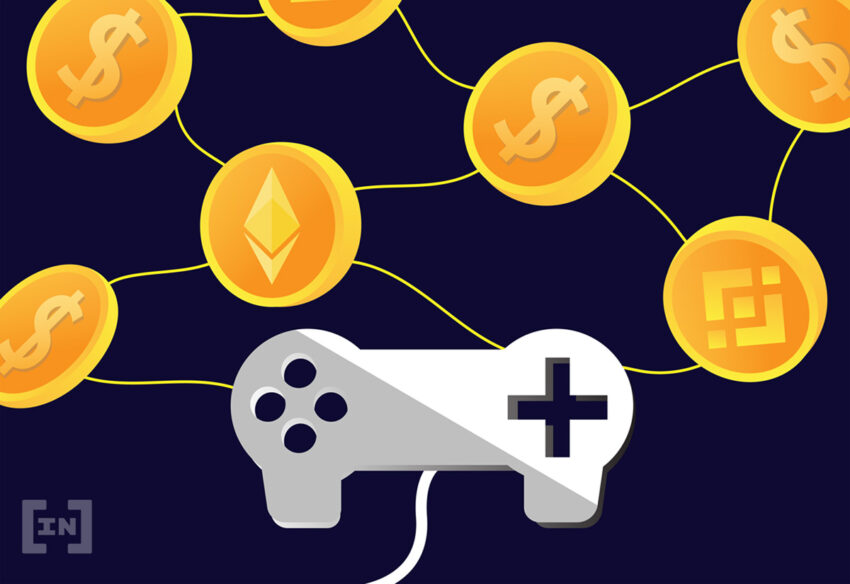For decades, video games have featured various in-game economies with tokens to collect and exchanges to advance in the game, whether collecting gold coins in the Super Mario series or dodging trains in Subway Surfers to earn shiny gold tokens.
Gaming is just one of the many industries being disrupted by the blockchain industry. The crypto industry undoubtedly revolves around pioneers on the hunt for the next big thing and a constant search for the most lucrative investment opportunities. GameFi, short for game finance, offers an opportunity to earn cryptocurrency tokens while playing online games.
Exploring the world of GameFi
GameFi represents a dynamic fusion of cutting-edge blockchain technology, DeFi, and the thrilling realm of gaming. At its core, GameFi introduces the revolutionary concept of P2E, where engaging in in-game activities translates into earning valuable digital assets, coveted rare items, and much more.
Traditionally, players accumulate in-game rewards by completing tasks, engaging in battles, and advancing through the game’s diverse levels. These virtual assets aren’t confined to the gaming universe; players can transfer them outside the game to trade on cryptocurrency exchanges and NFT marketplaces.
Blockchain technology is the powerhouse behind these games and their in-game tokens, while intelligent contracts are pivotal by decentralizing various aspects of the online gaming experience. NFTs, on the other hand, enable ownership of in-game characters and facilitate seamless asset exchanges. In the P2E ecosystem, players are rewarded for their active participation, which can encompass completing levels, breeding in-game characters, developing virtual lands, competing with other players, and more. These rewards span a gamut from digital tokens to coveted collectibles.
The gaming industry and the web3 frontier
As we enter 2023, the video games market is poised to scale new heights, with a projected revenue of a staggering US$334.00 billion. According to Statista‘s forecasts, this growth trend is expected to persist, with the number of users in the video games market predicted to surge to 3.1 billion by 2027, resulting in a market volume estimated at US$467.00 billion.
Amid this dynamic landscape, GameFi has carved out a niche for itself, albeit with a relatively modest market share of around $9 billion. However, Business Research Insights paints an optimistic picture, projecting a tenfold growth, soaring beyond $90 billion by 2031.
Web3 gaming, distinguished by its enhanced security, increased user data control, and promising income-generating potential, still grapples with specific challenges. It lags behind traditional video games regarding user experience, entertainment value, and ease of setup and play. Nevertheless, several prominent players within the Web3 realm are stepping up to compete with established game studios, striving to create engaging ‘play-to-earn’ experiences that captivate a wider audience.
Gala Games represents a blockchain gaming platform that empowers players to earn cryptocurrencies and non-fungible tokens (NFTs) through immersive gameplay experiences. At its heart, the GALA token is pivotal in securing the platform and incentivizing active players. With a burgeoning monthly user count of over 1.3 million, Gala Games has not only captured the attention of a massive gaming community but has also proven its mettle by selling over 26,000 NFTs. A solid holder base of more than 200,000 individuals underscores its popularity and reach.
Sidus, a trailblazing name in the GameFi industry, introduces a unique video game concept that operates on a play-to-earn model. One of its distinguishing features is empowering players with ownership rights over their in-game items. Sidus further pushes the envelope by experimenting with casual games on the Telegram platform and offering a diverse ecosystem comprising four games.

Nakamoto Games is an innovative Play-to-Earn gaming ecosystem designed to facilitate the seamless deployment of games for developers. At its core, the ecosystem is powered by the NAKA token, which finds utility across various dimensions – from in-game transactions and rewards to marketplace activities, governance decisions, token burning, and research endeavors. Boasting an impressive user base exceeding 650,000, Nakamoto Games has solidified its presence in the crypto gaming arena. Notably, the platform has inked partnerships with major entities, including MATIC, Facebook, and the Thai government, further accentuating its prominence.
Age of Dino is poised to redefine the landscape of massively multiplayer online (MMO) strategy gaming. This next-generation experience promises to deliver an unparalleled adventure for both gamers and digital collectors alike, setting a new standard in the world of online gaming.
UpOnly aspires to claim the mantle of leadership in the gaming industry by establishing itself as the ultimate knowledge base and directory for Web3 games. Its mission revolves around curating and presenting comprehensive data drawn from the vast realm of P2E games. This data includes crucial metrics such as prize sizes, the activity of games, and winning odds. Additionally, UpOnly diligently categorizes blockchain-based games, assessing their usage and token price movements to provide a valuable resource for the growing Web3 gaming community.
In the world of GameFi, we find ourselves in the nascent stages of a gaming revolution, with just a handful of promising titles on the horizon that hold the potential to usher the play-to-earn model into the mainstream. As blockchain technology relentlessly advances and fresh use cases continue to surface, GameFi stands poised to introduce a new realm of innovation and engagement to the gaming community.
The post Can GameFi Pave the Way to Mass Adoption of NFTs? appeared first on BeInCrypto.
